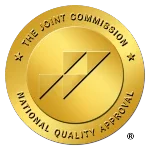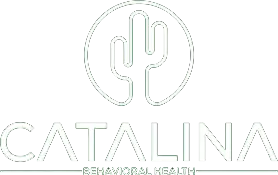Our Residential Treatment Program is Built Around You
The problems of substance use, addiction, and eating disorders may be met head-on with the help of round-the-clock care and counseling at a residential treatment program.
When it comes to mental health care, a residential treatment center offers more comprehensive services than just talk therapy in the form of individual, family, or group sessions. All types of addictions are treated at residential treatment programs, with durations lasting anywhere from 28 days to six months or more.
Users may also benefit from the time spent at a therapeutic retreat, where they can devote their whole attention to resolving the issues that have been interfering with their health and happiness. This method of treatment, like residential treatment centers, has found widespread acceptance among mental health services since it allows clients to focus entirely on their recovery while removing them from their usual environments.
Keep reading to find out more about our inpatient offerings at Catalina, and what makes them such an effective choice for lasting recovery!
Get Residential Treatment at Catalina Now!
What Is a Residential Treatment Center?
In order to fully benefit from the rigorous therapeutic treatments provided by residential treatment centers, clients must relocate to the facility for the length of their care. Safe, effective, evidence-based care is available at these facilities for clients who have suffered severely as a result of difficulties, including drug misuse, addiction, and/or other addiction or mental health crisis.
Residential treatment centers provide clients with the chance to work with trained mental health specialists to address their emotional, behavioral, and mental health concerns. A woman breaks down in tears during group therapy.
Modern residential treatment programs such as our offering at Catalina Behavioral Health accept clients of all demographics and provide care for a wide range of issues, including but not limited to trauma, substance misuse, eating disorders, personality, cognitive development, and addictive and compulsive behaviors.
Participants in these programs often attend after undergoing diagnostic evaluations and screenings by the mental health services administration that indicate they may require intensive treatment to achieve sustained sobriety.
Many different types of therapy that have been shown to be effective are typically offered as part of the treatment process at residential treatment programs. The healing process at these treatment centers is aided by a combination of individual and group therapy sessions, complemented by family therapy sessions, which provide continued care even after an individual has experienced positive treatment outcomes.
Residential programs’ primary strategy may change depending on the client who is seeking treatment services. However, these residential programs may include some or all of the following forms of therapeutic relief:
- Art therapy
- Physical exercise
- Family therapy sessions
- Meditation
Residential treatment facilities provide people with the resources they need to enhance their quality of life, learn new skills, and build meaningful connections with others.
What is Retreat Based Therapy?

Therapeutic retreats aim to provide an escape from the monotony, pressure, and overpowering nature of daily life to improve emotional health. Spas and wellness facilities double as retreats for those seeking treatment, providing a calm environment for individual, couples, and family therapy sessions.
A retreat center can provide the time and isolation necessary for people to work through their problems on multiple levels, including physical, mental, relational, or spiritual. Afterward, they can return to their regular lives feeling refreshed and ready to take on whatever obstacles they encounter.
Lately, there has been a rise in the popularity of the retreat-based program, which seeks to promote healing via a combination of seclusion and gentle exercise. Retreat settings are ideal for family and marital therapy because of the increased privacy and fewer distractions that allow for a more in-depth examination of one’s inner world and interpersonal connections.
Individuals in need of emotional and mental health care can take advantage of the retreat-based therapy style to work through issues on a personal, family, or relational level in a concentrated but time-efficient manner.
Location of Residential Treatment and Retreat Facilities
Residential treatment programs may be found in every major city in the United States and even in many small to mid-size towns. There are a number of things to think about before committing to a certain rehab.
It may be necessary to travel out of state to get to the program that best fits the client’s requirements, depending on the nature of the problem being treated and the location of the person seeking therapy. Knowing what you want to get out of treatment will help you zero in on the proper program.
If combined with knowledge of the kind of environment best suited for optimal comfort, this treatment type will contribute to the long-term health and prosperity of the client.
The Importance of a Healing Environment

Residential treatment centers often provide one of four distinct approaches to care.
- Besides intensive counseling, life skills training, substance abuse treatment, and academic instruction are common components of residential clinical treatment programs.
- Residents in group residential communities (also called group homes or halfway houses) are provided with a supportive family environment in order to better their emotional well-being, social skills, and coping mechanisms for dealing with mental health issues.
- Residents of residential programs with a farm or labor component benefit from daily employment in addition to therapeutic therapy, which aids in their development and rehabilitation.
- In complexes similar to apartment living, people can maintain a higher level of autonomy than they could in alternative treatment environments.
The services and amenities provided by retreat facilities also differ widely. Several prominent marriage and family therapists now provide their services in a retreat setting, and this trend appears to be growing in popularity.
Nonetheless, in the United States, you can find a wide range of retreat facilities where you may participate in a number of programs designed to help with things like substance misuse, family and relationship problems, and stress.
Barriers to Rehab: Worries and Roadblocks
The cost of staying in a residential treatment or retreat facility is a major drawback of these types of facilities. The cost of therapy in a residential setting could be substantial.
Because of this, those without financial means or private insurance can face obstacles to getting care. Even those looking for a ‘court ordered rehab near me,’ typically pay for their program, meaning cost is very much a concern.
When it comes to paying for residential treatment or a retreat, some institutions do provide financial aid in the form of scholarships or work-study programs. In particular, this is true for retreat facilities that emphasize spirituality or mindfulness. Uninsured or underinsured patients, or those with other financial constraints, can find help at one of the many low-cost, no-cost, or nonprofit treatment clinics located around the United States.
For the vast majority of people, financial constraints continue to prevent them from receiving care. The Mental Health Parity and Addiction Equality Act was signed into law in November 2013 to address these and other issues. Inpatient treatment for drug addiction and mental health concerns is becoming more widely covered by health insurance policies.
In reality, the legislation makes denying treatment for mental health issues illegal, and the coverage is expected to be similar to that granted for bodily disorders. When these policies are implemented, those who previously lacked access to effective treatment alternatives will now have that opportunity.
Catalina Behavioral Health is fully committed to making treatment as accessible as possible for all in need. With our recent expansion of insurance accepts, their Admissions team can now accept plans from providers including AHCCCS insurance (which also offers its AIHP rehab program for tribal members in Arizona).
The Benefits of Residential Treatment Programs

One might find significant differences between the various residential treatment facilities. There are a few consistent, underlying factors that, in spite of the variations, help explain why residential may be highly productive.
Constant supervision and access to staff members at all times is a major benefit of residential treatment programs as compared to less intensive settings. Although it may feel intrusive at times, consistent follow-up is essential for monitoring a patient’s development, spotting potential trouble spots, and preventing relapse.
Having some space from one’s current position and the people and places that may be upsetting may aid in developing discernment and perspective, affording the option of surrounding oneself with more supportive and positive people.
Treatment approaches that go beyond traditional “talk therapy” are commonplace in residential institutions for substance abuse. Many residential treatment facilities take a holistic approach when it comes to healing the whole person (body, mind, and spirit). Trauma, horse, art, and surf therapy are some of the most common approaches to recovery in these environments.
Our residential treatment center at Catalina follows a routine and regimented daily program. In addition to maintaining a regular sleep and waking schedule, clients will also adhere to a regimen of planned medical and mental health treatment appointments and time for leisure activities and exercise.
24 Hour Treatment Options – Get Help Now
What to Look for In a Residential Treatment Center
Certifications and/or Accreditations
All residential treatment centers should be licensed by the state in which it is located. The standards for obtaining a license vary significantly from state to state, but all such facilities should be accredited as well.
Many residential treatment providers, and certainly our services at Catalina, go above the minimum requirements set by licensing authorities by pursuing extra certification. Although it’s not necessary, it’s wise to look for an a facility that has earned accreditation in addition to its license. At Catalina, we’re proud to be Joint Commission accredited, and dedicated to continuously improving our staff training methods as well as our client services.
Access to Higher Medical Facilities
In the event of a medical emergency, clients at a top-notch residential treatment center will have easy access to nearby hospitals and/or urgent care clinics. It is crucial that the treatment facility has these resources accessible if a client suffers an accident, participates in self-harm, or is in crisis (and consequently needs more help).
Aftercare Planning and Relapse Prevention

Discharge planning, or aftercare planning, occurs immediately after residential treatment(there are some exceptions to this based on the individual). The client and their treatment team will meet to discuss the next steps in the client’s care after they leave the residential treatment facility.
Efficient and Qualified Staff Members
A qualified staff is essential at a residential care facility (RTC), and it’s not only about having enough people to cover emergencies. Since some clients may be admitted and others may be discharged on any given day, the client numbers may vary. As a result, there must be sufficient personnel to care for a potentially infinite number of clients (depending on the maximum capacity of the treatment center).
Private residential institutions attempt to give comprehensive treatment experiences in a more personal atmosphere that supports healing holistically, as opposed to hospital-based in-patient care. Catalina Behavioral Health is experienced in offering these types of therapy and more. These programs are designed to help you get the most out of your time in care by addressing your whole spectrum of needs so that you may concentrate on your recovery.
A Dedicated Medical Detox Setting

During the intake phase, all clients are evaluated to see whether or not they are a good fit for the program in terms of its ability to satisfy their requirements and the client’s ability to actively engage in treatment. Each client is surrounded by peers who are willing to participate in individual and group-based therapy methods, so you may draw strength from the company of others who can relate to what you’re going through.
Recuperation in this setting looks significantly different from what you often see in movies and TV shows. These sorts of programs are meant to nurture you at all levels of care, functioning as your guide and partner in recovery and always trying to pull out your strengths rather than stripping you of your dignity. Now is the time with the greatest potential for improvement, and healing can begin.
Typical Timeline of a Residential Program
Below is an example of the typical timeline from beginning to end during residential treatment.
Day One or Your Intake Day
You and/or your loved ones will take part in a pre-admission evaluation and maybe visit the treatment center before entering the program to ensure it is the best fit. However, on the day of your arrival, despite these preparations, you may still feel overwhelmed and question whether or not you made the right choice in choosing residential treatment. You should wake up and have breakfast, and start the day off normally as you begin your transition.
For your convenience, your loved ones can complete the intake forms on your behalf. When transferring from another treatment program, whether outpatient or inpatient, there should have been preexisting communication between the two facilities to ensure a smooth transition.
Following completion of the necessary paperwork, you will be given a tour of the facility and introduced to the staff in order to help you feel more at home in your new temporary location. The friendly staff will gladly assist you with unpacking and any inquiries you may have; they know how stressful moving can be and are there to ease your mind.
During lunch, you’ll meet some of the other clients and get to know one other a little more as you settle into the community. The next step is to schedule an initial consultation with a therapist or psychiatrist.
Week One of Residential Treatment
Getting used to your new surroundings is a major focus during the first week of treatment. You are settling into a brand-new home, community, and routine all at once. You are beginning to build a strong therapeutic connection by getting to know your therapists. As your newbie anxiety fades and you begin the journey to recovery, it is natural to feel a wide range of emotions.
Weeks Two and Three in Rehab

By the second week of therapy, you should have a good grasp of the schedule. Bonding with your peers might help you feel more at ease in group therapy, which can be a frightening element of treatment for many at first. You have also begun significant work with your primary therapist in rigorous individual psychotherapy, which is the backbone of treatment at Catalina Behavioral Health. This is where challenges may arise.
In order to overcome mental anguish, one must first delve deep within themselves to discover the source of their issues and then bring it into the light. It’s possible that you’ll have to face some hard truths about yourself and your life throughout this process. As you become closer to your therapist, you’ll feel more comfortable opening up more about your life.
Some people feel it’s best to keep those sentiments locked up and out of sight, since they may also bring back painful thoughts and memories that may make you question the process of therapy. Yet this stage is vital for the healing process overall.
At this stage, some people have a crisis of recovery when they feel like they are regressing instead of progressing. This is to be expected and really indicates development. Your treatment staff is aware of this and will provide you with as much help as possible to get you through this difficult time.
Immediate Placement for Treatment – Call Now!
Week Four and Beyond
It is common for people to start making progress toward resolution around weeks four through six. In group therapy, you may find that you are now in a better place emotionally to offer encouragement and receive feedback from your peers. You and your primary therapist have pinpointed the obstacles to your recovery and are making concerted efforts to dismantle them.
By laying the groundwork for continued assistance at home, you are building self-assurance and preparing for life beyond residential treatment. This will make your transition back into ordinary life much smoother and more successful. Of course, you may always continue your therapy if you don’t feel like you’ve progressed to the point where you’re ready to go home.
While in treatment, you may have also been given a medicine regimen, if necessary. Our psychiatrists formulate individualized psychopharmacological treatment plans for each client and closely track their progress to provide the best possible outcomes with the fewest possible adverse effects.
Since our treatment is residential, we may increase the intensity and adjust medication more quickly in reaction to your symptoms than in an outpatient setting. Full stabilization on medication is usually reached by week four; however, it might take longer for some people. Therefore, it is essential that you maintain a degree of adaptability and adjust the nature and length of therapy to your specific needs as they evolve during the course of care.
Achieve Lasting Recovery With Our Support!

At Catalina Behavioral Health, we offer a wide range of treatment programs to accommodate clients of all types and backgrounds. We offer multiple therapeutic solutions to provide various options and room for growth during treatment.
To find out how we can help you achieve your goals of recovery, contact a member of our Admissions team today!





